Best Running Shoes
Best Running Shoes for Women
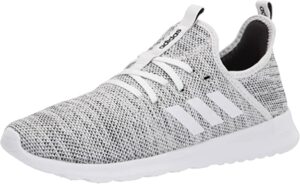
Best Running Shoes for Men
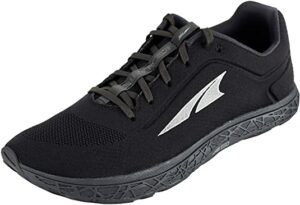
Best Running Shoes for Treadmill
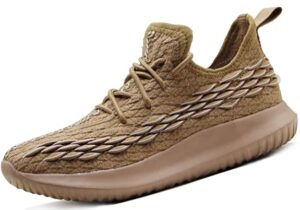
Best Running Shoes for Shin Splints
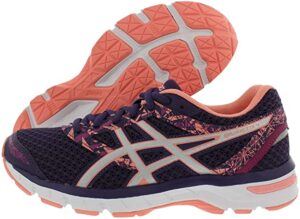
Best Running Shoes for Plantar Fasciitis
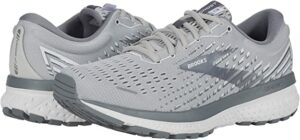
Best Running Shoes for Supination
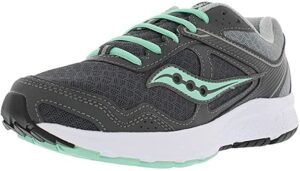
Best Running Shoes for Pronation
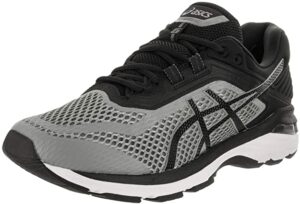
The difficult thing about buying running shoes is that there are SO many options and it can be downright confusing. But the honest truth is that several factors can play a part in which shoe is right for you. In fact, you have to consider multiple determinants such as your age, height, weight, any foot, leg or knee issues, and what terrain you’ll be running on.
And your combination of determinants affect several different aspects found within running shoes, like cushioning, flexibility, support and fit.
What makes a great running shoe?
Cushioning
It’s crazy how a small change like the length and pace of your runs, or whether you’re jogging on a treadmill or racing on a track, can affect the running shoe you should buy, but all of these factors play a huge role in determining the level of cushioning needed in your running shoes.
Think of cushioning in a running shoe as a spring – it “converts the impact energy into heat and therefore reduces the forces acting on your body”. Experts say that, depending on your weight, speed and length of your run, these forces can be two to three times your own body weight. So, it’s important that our shoes provide the proper cushioning – for both comfort and protection.
The type of cushioning you need has a lot to do with the kind of running you do. If you go for fast runs, you’ll need lightweight cushioning. Effective “pushing to the limit” runners require moderate cushioning. Long and steady runners prefer extensive cushioning, and those who want extra soft feeling will want maximum cushioning.
Now, consider the terrain you’ll be running on as well. You shouldn’t use the same running sneaker to run on a trail that you would to run on a track. Track or treadmill running require shoes that are targeted specifically for synthetic grounds. Road runners will need shoes that guarantee reliable safety on hard ground. Those who run on uneven ground require running shoes with good traction, and trail running lovers will want to invest in non-slip shoes, even when running on damp ground.
Support
Factors like your weight and height, your length of runs, type of runs and your running gait (also referred to as pronation) can all play a huge part in the level of support you’ll need to look for when buying running shoes.
If you’re running for length or distance, and “long runs” are your thing, your sneaker needs to have greater support. This is because muscles lose their power after a certain amount of time, and a shoe without the right support will leave you prone to injuries and discomfort.
One of the most important factors to consider is your level of pronation. This refers to how your foot touches the ground when moving. If you find that you’re more likely to overpronate, you need running shoes with higher support, as this can help to balance a pronounced pronation.
And lastly, your body weight can impact the level of support your running shoe needs. Generally, runners with heavier body weights should use shoes with greater shoe support. This will help to protect their joints and support their feet to prevent any discomfort or injury that can occur.
Fit
Even when you find the shoe with all of the right technologies and features, it still comes down to how your running shoe fits you. In fact, the fit of your sneaker changes the level of flexibility your shoe will offer. A wide fitting shoe allows you more range of movement and a more comfortable feel, while a tighter fit offers more control.
This, once again, really depends on your running style, routes and terrain. Running downhill? You’ll need better grip for more control – so a tighter fitting shoe will be your best bet. Running uphill on the other hand requires stability with freedom of movement.
Best Running Shoes for Women

The adidas Cloudfoam running shoes are true to the name – one reviewer describes them as “running on a cloud”, and as a runner, we can’t imagine anything better!
Crafted with a stretchy mesh upper that’s meant to hug your foot when worn, these sockless running shoes fit like a dream. And with cloudfoam memory, the cushioning will make every step of your stride comfortable.
Available in 45 different colors and an array of full and half sizes from 5 to 12, this is the perfect basic, go-to running shoe for all women.
Best Running Shoes for Men

Altra took their best sneakers, and then made them even better! Crafted with a new knit, this sockless sneaker features way more flexibility throughout the midsole and outsole, and more perforations to increase the breathability of the running shoe.
If you’re looking for a running shoe that’ll hug your foot and provide long-lasting comfort, then look no further. Plus, using Footpod Technology, the shoe maps the bones and tendons of your foot, which will better help your foot to bend and move naturally and comfortably.
Available in 5 different colors, this shoe is only found in men’s size 8 to 15.
Best Running Shoes for Treadmill

If you prefer the gym to the street, and your running is mostly done on a treadmill then you’ll need a special running shoe to match the terrain. The truth of the matter is that your running shoes should be catered for the ground or material you run on. A track, the road, a trail and a treadmill are all vastly different running experiences and we can’t expect that one shoe fits all terrains.
So, whether you have a treadmill in your home for easy exercise or you prefer the controlled running environment over any external factors of running outdoors, you’ll need a special running shoe for your treadmill runs – and that’s where this CAMVAVSR sneaker comes in.
And, it’s not just about function with this shoe! This unisex sneaker is so fashionable and stylish, you’ll want to wear them on the go as much as you will at the gym! Available in 10 different colorways, and full and half sizes ranging from men’s 4 to 13 or women’s 6 to 14, there’s an option for everyone!
Best Running Shoes for Shin Splints

Those who suffer with shin splints know how debilitating they can be on a run. In fact, shin splints, or its official name, medial tibial stress syndrome, accounts for about 10 to 15 percent of all running injuries. More than that, up to 60 percent of conditions causing leg pain in athletes or runners have been attributed to shin splints! So, this is a common and dangerous issue. Which is why choosing the correct running shoe is important.
ASICS created a running shoe with Rearfoot GEL Cushioning to attenuate shock during the impact phase, allowing for smooth transition to midstance while running. This shock-absorbing technology does wonders for those prone to shin splints, helping to reduce the strain on your medial tibial bone.
This running shoe also features a removable sockliner to accommodate a medical orthotic as needed, to ensure the utmost comfort for those who need a little extra support in their running shoes.
Available in 11 different color options, this running shoe comes in both Regular and Wide widths for women’s half and full sizes ranging from 5 to 11.
Best Running Shoes for Plantar Fasciitis

An estimated two million Americans suffer with plantar fasciitis. If you find yourself having intense and unbearable heel pain, made worse while wearing sneakers or exercising, chances are you do too. It’s considered incredibly common, and about 83 percent of active adults between the ages of 25 and 65 will experience (and suffer!) from plantar fasciitis at some point in their life.
And for those who experience this heel pain, choosing the right running shoe is incredibly important. Not just for comfort, but to prevent further heel pain, or worse, greater injuries from forming.
For running with plantar fasciitis, you should look for a shoe that offers support, cushioning and heel and arch support. The Brooks Ghost sneaker is the perfect package. These shoes boast high energizing cushioning, with their BioMoGo DNA and DNA LOFT cushioning technologies working together to provide that “just right” feeling – comfortable, but not too soft that your foot isn’t supported.
Promising a “smooth, stable ride”, Brooks’ Segmented Crash Pad technology is a shock absorbing system to cushion every single step and stride for longer, more comfortable runs.
With 29 different color options, and sizes ranging from 4.5 to 13, in both half and full sizes as well Regular, Narrow and Wide options, there’s a Brooks Ghost shoe for everyone!
Best Running Shoes for Supination

Supination and pronation are terms typically used to describe the orientation of your hand or foot. When it comes to your feet, it usually refers to how your weight is distributed while you walk or run. Supination means that when you walk or run, your body channels your weight toward the outside of your foot, and so your ankle and foot tend to lean outward.
Those who have supinated feet will feel discomfort on the outer side of their feet when you walk or run, and can have strained ankles. Supination can also lead to a number of other medical conditions or concerns, like shin splints, calluses or bunions on the outside of your foot, and pain in both the balls of your feet and your heels. Your shoes will also show uneven wear on the outside part of the sole.
Therefore, it’s important to choose a running shoe that will support your feet, ankles and heels as you run. That’s why people with supination love the Saucony Cohesion 10. With moderate cushioning and high support for your ankles and heels, this running shoe is perfect for those who tend to supinate.
While over-supinators should visit a doctor to get recommendations for their best fit, this is the perfect shoe for those who need a little extra support for your supination.
With 15 different color options, and sizes ranging from 6.5 to 12, in both half and full sizes as well Regular and Wide options, there’s an option for everyone.
Best Running Shoes for Pronation

Pronation, on the other hand, means that as you walk or run, your weight is distributed to the inside of your foot, and your ankle and feet roll and lean inward. This is way more common than supination, and your shoe will show uneven wear on the inside part of your sole.
Those who have pronated feet may develop pain in your arches, heels, ankles, shins, knees, hips and even, back. It also makes you more likely to develop other injuries. This clearly impacts every part of your body, and it’s important to buy and wear running shoes that offer the right support to further prevent any excess injuries.
We love the ASICS GT-2000 6. It’s made for people who overpronate. Promising superior comfort, thanks to their GEL technology and FLYTEFOAM technology, that work together to attenuate shock, providing incredible bounceback when running. Plus, their DYNAMIC DUOMAX support system enhances stability and support, while remaining lightweight for your feet.
Those with excessive overpronation should visit a doctor to get recommendations for their best fit, this is the perfect shoe for those who need a little extra support for your overpronation.
With 8 different color options, and sizes ranging from men’s 6 to 15, in both half and full sizes as well Regular and Wide options, the ASICS GT-2000 6 is a great option for runners with overpronation.
FAQs about Best Running Shoes
You may have some questions when selecting the best running shoes for you. Refer to these common queries below:
How often should I replace my running shoes?
This will differ by runner! The general rule of thumb is that you should replace your running shoes every 450 to 550 miles. So, if you log 10 miles a day, your shoe life will be much shorter than a runner who only does 2 miles per day. However, if your running shoes don’t show any of the signs of excessive wear (see next question), you may be able to go longer before replacing without increasing the risk of injury.
How do I know if it’s time to replace my running shoes?
There’s no definitive answer to this question, but there are signs of excessive wear that are tell-tale signs that it’s time to replace your shoes. This includes the outer sole worn through to the white midsole, the midsole collapsing easily under pressure, a less supportive heel counter, your toes wearing through the toe-box, asymmetrical soles between the two shoes, or one or both shoes no longer stand up straight when placed on a flat surface.
Chances are, if you can identify one or more of these signs, it’s time to buy a new shoe!
How can I extend the life of my running shoes?
There are quite a few factors that will affect how often you’ll need to change your running shoes, and knowing some of these and choosing the right shoe for you can extend the life of your shoes. The terrain you run on, for example, can help to determine whether you need to change your shoes. If you want to prolong the lifespan of your shoes, we recommend buying shoes designed for the terrain you run on most frequently. Also, choosing shoes meant for your running style (be it heel strikers, forefoot strikers, pronation or supination) can help to extend your shoe’s life, as there won’t be excessive wear unnecessarily.

